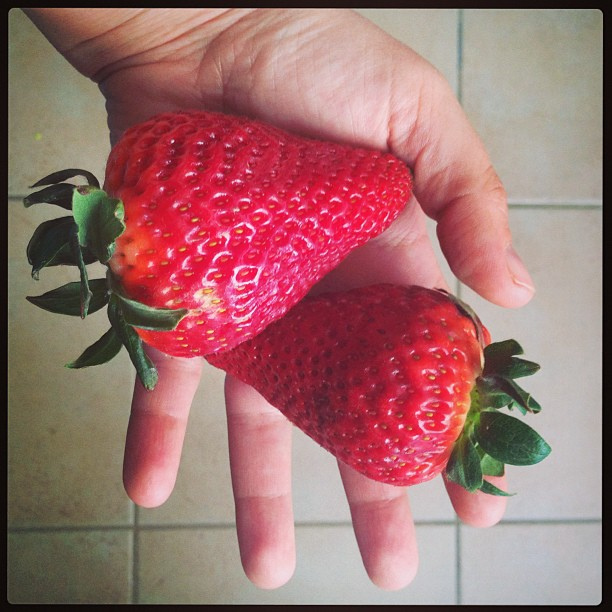What Are GMOs?

The controversies over GMOs are around whether such food should be labeled, the role of government regulators, the objectivity of scientific research and publication, the effect of genetically modified crops on health and the environment, the effect on pesticide resistance, the impact of such crops for farmers, and the role of the crops in feeding the world population.
So should you be concerned about them?
Many developed nations don’t consider GMOs to be safe. In more than 60 countries around the world (including Australia, Japan, and all of the countries in the European Union) there are restrictions or bans on the production and sale of GMOs.
There is no way that you can tell by looking at something whether or not it’s been genetically modified, as there are no labeling requirements currently in use in the U.S.
The Non-GMO Project, a non-profit 501(c)3 organization, offers North America’s only third-party verification and labeling for non-GMO food and products. The project identifies those products most likely to be genetically modified:
High-Risk Crops:
- Alfalfa
- Canola (approx. 90% of U.S. crop)
- Corn (approx. 88% of U.S. crop in 2011)
- Cotton (approx. 90% of U.S. crop in 2011)
- Papaya (most of Hawaiian crop; approximately 988 acres)
- Soy (approx. 94% of U.S. crop in 2011)
- Sugar Beets (approx. 95% of U.S. crop in 2010)
- Zucchini and Yellow Summer Squash (approx. 25,000 acres)
Monitored Crops:
- Beta vulgaris (e.g., chard, table beets)
- Brassica napa (e.g., rutabaga, Siberian kale)
- Brassica rapa (e.g., bok choy, mizuna, Chinese cabbage, turnip, rapini, tatsoi)
- Cucurbita (acorn squash, delicata squash, patty pan)
- Flax
- Rice
- Wheat
And There’s More…
- Tomatoes: In 1994, genetically modified Flavr Savr tomatoes became the first commercially produced GMOs. They were brought out of production just a few years later, in 1997, due to problems with flavor and ability to hold up in shipping. There are no genetically engineered tomatoes in commercial production, and tomatoes are considered “low-risk” by the Non-GMO Project Standard.
- Potatoes: Genetically modified NewLeaf potatoes were introduced by Monsanto in 1996. Due to consumer rejection by several fast-food chains and chip makers, the product was never successful and was discontinued in the spring of 2001. There are no genetically engineered potatoes in commercial production, and potatoes are considered “low-risk” by the Non-GMO Project Standard.
- Salmon: A company called AquaBounty is currently petitioning the FDA to approve its genetically engineered variety of salmon.
- Pigs: A genetically engineered variety of pig, called Enviropig was developed by scientists at the University of Guelph, with research starting in 1995 and government approval sought beginning in 2009. In 2012 the University announced an end to the Enviropig program, and the pigs themselves were euthanized in June 2012.
However, the debate as to whether or not GMOs are hazardous continues. Writing in Forbes magazine last September, Jon Entine says,
Is there any basis to these allegations? After all, globally, food-producing animals consume 70% to 90% of genetically engineered crop biomass, mostly corn and soybean. In the United States alone, animal agriculture produces over 9 billion food-producing animals annually, and more than 95% of these animals consume feed containing GE ingredients. The numbers are similar in large GMO producing countries with a large agricultural sector, such as Brazil and Argentina.
Estimates of the numbers of meals consumed by feed animals since the introduction of GM crops 18 years ago would number well into the trillions. By common sense alone, if GE feed were causing unusual problems among livestock, farmers would have noticed.
In addition, most conventional agricultural products are the products of genetic manipulation via traditional cross-breeding and hybridization. So what is the difference?
The American Association for the Advancement of Science has declared that “indeed, the science is quite clear: crop improvement by the modern molecular techniques of biotechnology is safe.”
The release of GMOs into the environment, and the marketing of genetically modified foods, have resulted in public debate in many parts of the world. This debate is likely to continue, probably in the broader context of other uses of biotechnology and their consequences for human societies. Even though the issues under debate are usually very similar (costs and benefits, safety issues), the outcome of the debate differs from country to country. On issues such as labeling and traceability of genetically modified foods as a way to address consumer preferences, there is no worldwide consensus to date.
What do you think? Share your ideas, concerns, and thoughts in the comments section below!
